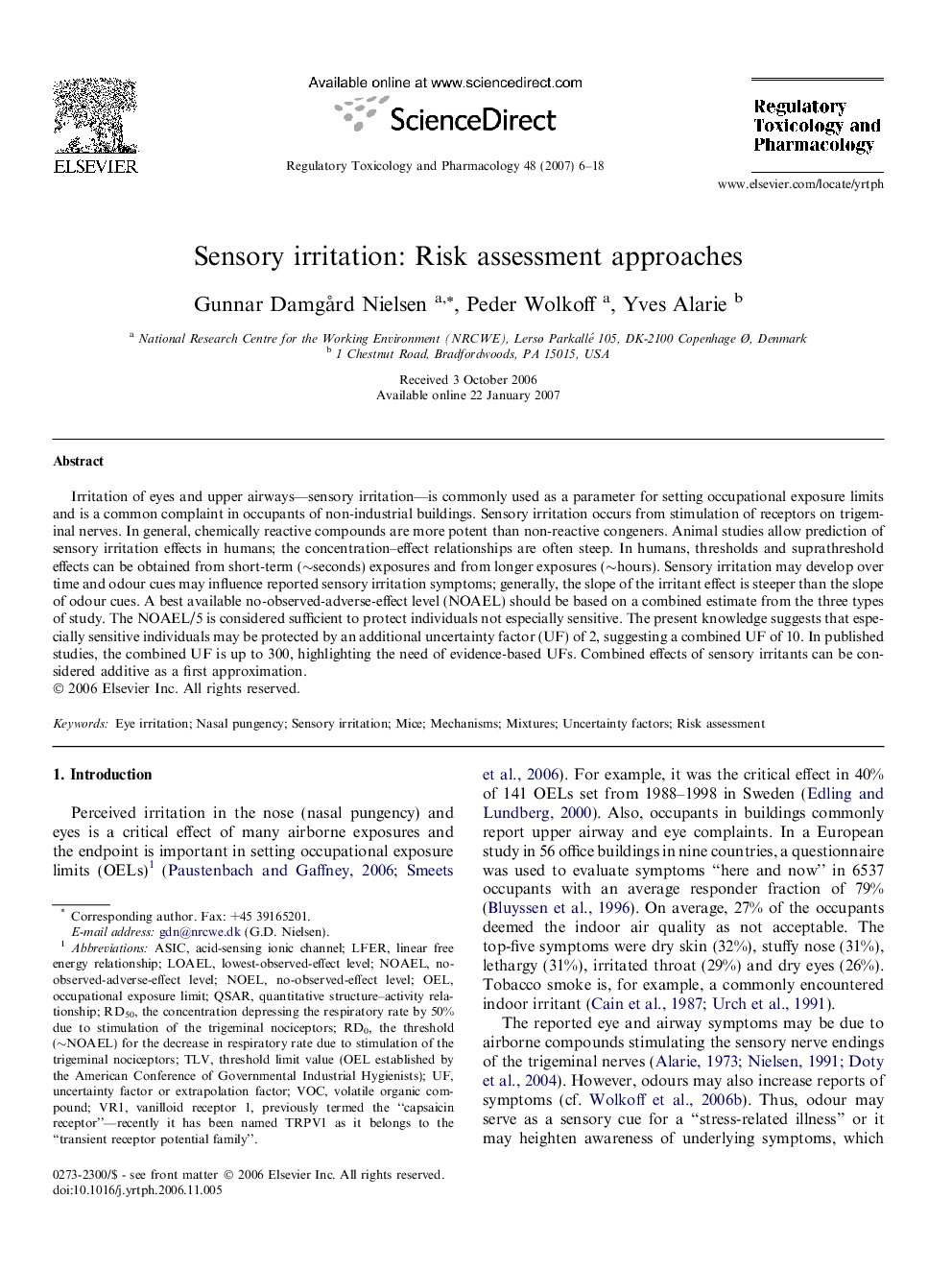| Article ID | Journal | Published Year | Pages | File Type |
|---|---|---|---|---|
| 2593033 | Regulatory Toxicology and Pharmacology | 2007 | 13 Pages |
Irritation of eyes and upper airways—sensory irritation—is commonly used as a parameter for setting occupational exposure limits and is a common complaint in occupants of non-industrial buildings. Sensory irritation occurs from stimulation of receptors on trigeminal nerves. In general, chemically reactive compounds are more potent than non-reactive congeners. Animal studies allow prediction of sensory irritation effects in humans; the concentration–effect relationships are often steep. In humans, thresholds and suprathreshold effects can be obtained from short-term (∼seconds) exposures and from longer exposures (∼hours). Sensory irritation may develop over time and odour cues may influence reported sensory irritation symptoms; generally, the slope of the irritant effect is steeper than the slope of odour cues. A best available no-observed-adverse-effect level (NOAEL) should be based on a combined estimate from the three types of study. The NOAEL/5 is considered sufficient to protect individuals not especially sensitive. The present knowledge suggests that especially sensitive individuals may be protected by an additional uncertainty factor (UF) of 2, suggesting a combined UF of 10. In published studies, the combined UF is up to 300, highlighting the need of evidence-based UFs. Combined effects of sensory irritants can be considered additive as a first approximation.
